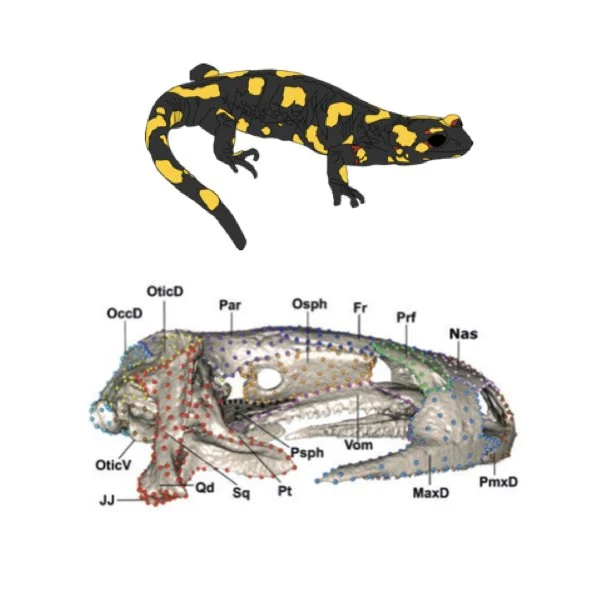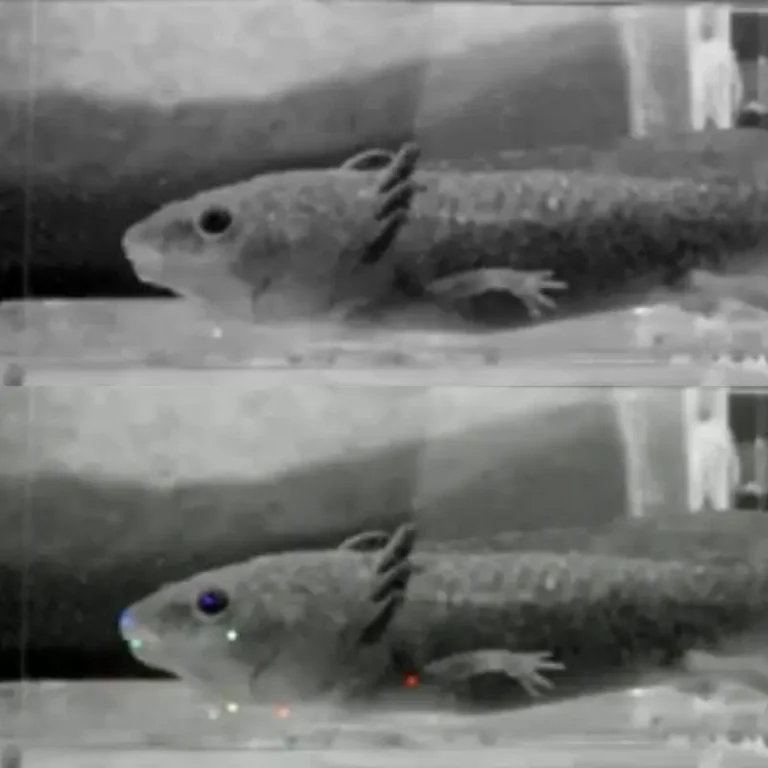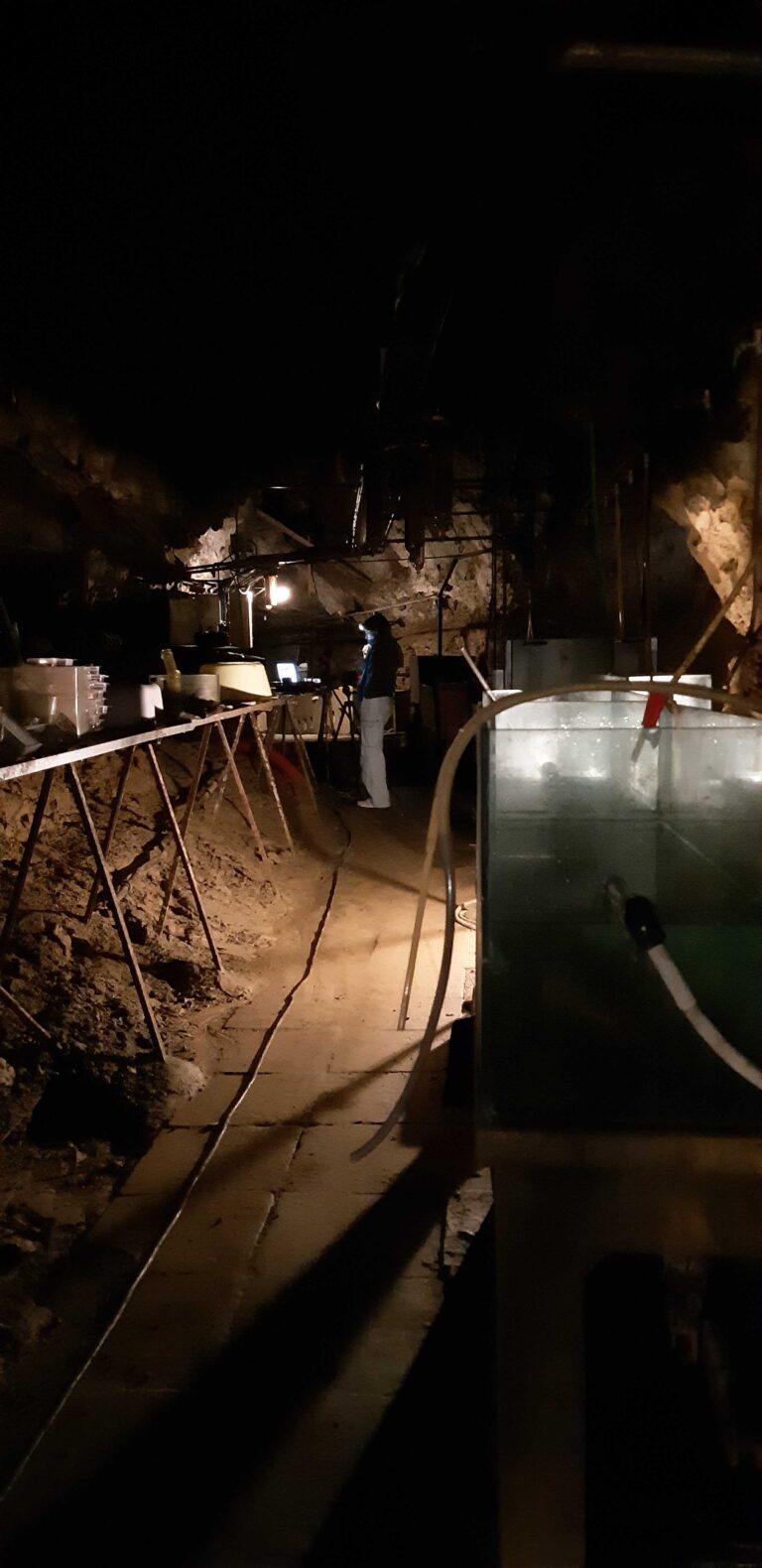
Phänotypische Integration und Modularität sind Konzepte, die das Muster der Konnektivität von morphologischen Strukturen innerhalb eines Organismus darstellen. Integration beschreibt die koordinierte Variation von Merkmalen, und Analysen dieser Beziehungen zwischen Merkmalen zeigen oft das Vorhandensein von Modulen, d. h. von Gruppen von Merkmalen, die stark integriert, aber relativ unabhängig von anderen Merkmalen sind. Phänotypische Integration und Modularität wurden sowohl auf evolutionärer als auch auf statischer Ebene in einer Vielzahl von Kladen untersucht, wobei sich die meisten Studien bisher auf Amnioten und insbesondere Säugetiere konzentrierten.
Unter unser Artikel, der diese Woche im Biological Journal of the Linnean Society erschienen istverwenden wir einen hochdimensionalen geometrischen morphometrischen Ansatz, um das Muster der Schädelintegration und die Modularität des Italienischen Feuersalamanders zu untersuchen (Salamandra salamandra giglioli). Wir konnten ein hochgradig modulares Muster feststellen, das jedoch weder die reine Entwicklungs- noch die Funktionshypothese der Schädelorganisation unterstützt, was möglicherweise auf komplexe Wechselwirkungen zwischen mehreren Einflussfaktoren zurückzuführen ist.
Wir fanden heraus, dass die Größe keinen signifikanten Einfluss auf die Schädelform hatte und dass die morphologische Varianz der einzelnen Module keinen signifikanten Zusammenhang mit dem Grad der Integration innerhalb der Module hatte. Das Muster der Schädelintegration beim Feuersalamander ähnelt dem, das zuvor für Caeciliane gefunden wurde, mit stark integriertem Kiefersuspensorium und okzipitalen Regionen, was auf eine mögliche Erhaltung von Mustern bei Lissamphibien hindeutet.
Ausgewählte Veröffentlichung: Bon, M., Bardua, C., Goswami, A., & Fabre, A. C. (2020). Die kraniale Integration beim Feuersalamander, Salamandra salamandra (Caudata: Salamandridae). Biologische Zeitschrift der Linnean-Gesellschaft, 130(1), 178-194.



